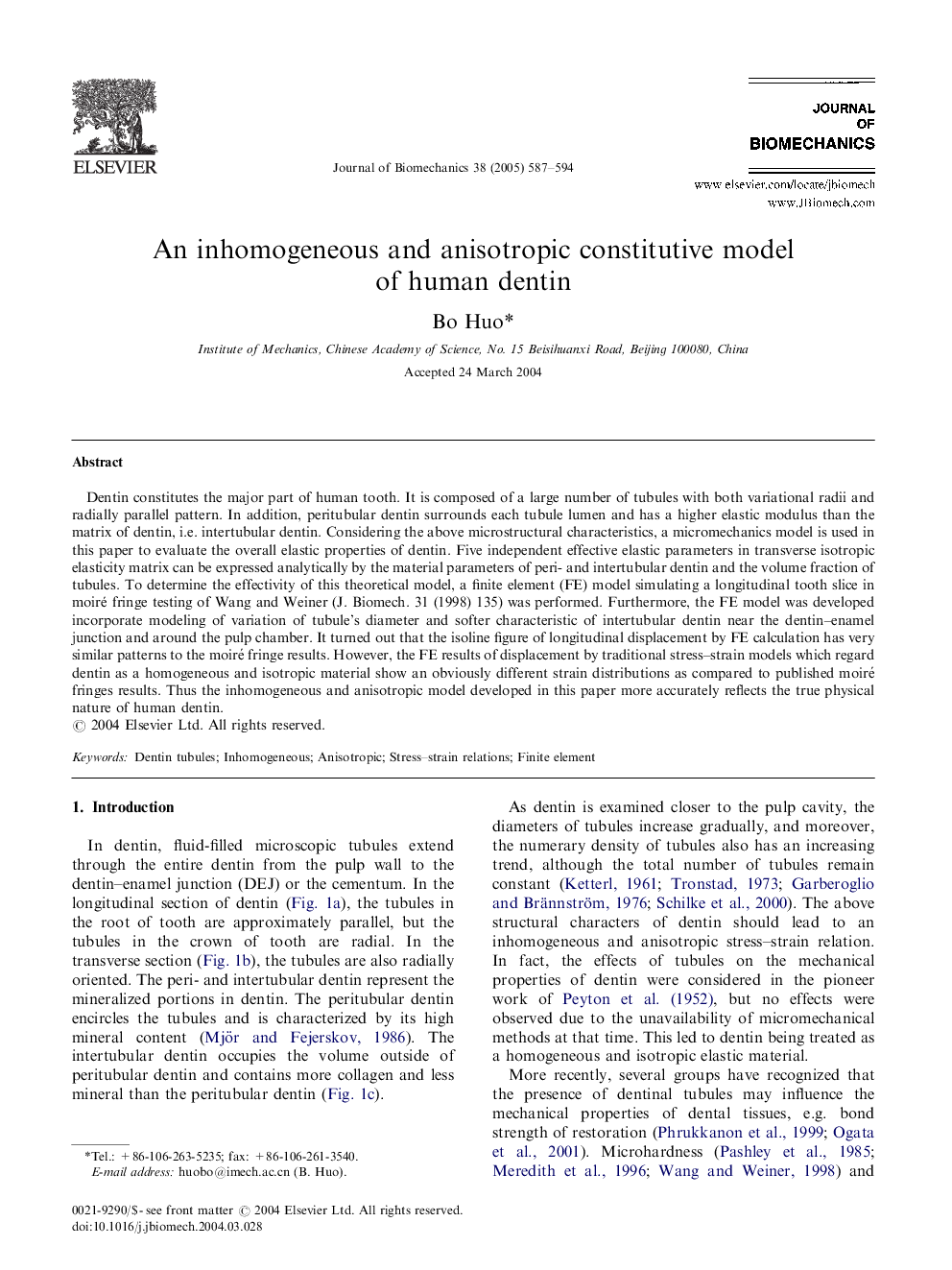| Article ID | Journal | Published Year | Pages | File Type |
|---|---|---|---|---|
| 10433726 | Journal of Biomechanics | 2005 | 8 Pages |
Abstract
Dentin constitutes the major part of human tooth. It is composed of a large number of tubules with both variational radii and radially parallel pattern. In addition, peritubular dentin surrounds each tubule lumen and has a higher elastic modulus than the matrix of dentin, i.e. intertubular dentin. Considering the above microstructural characteristics, a micromechanics model is used in this paper to evaluate the overall elastic properties of dentin. Five independent effective elastic parameters in transverse isotropic elasticity matrix can be expressed analytically by the material parameters of peri- and intertubular dentin and the volume fraction of tubules. To determine the effectivity of this theoretical model, a finite element (FE) model simulating a longitudinal tooth slice in moiré fringe testing of Wang and Weiner (J. Biomech. 31 (1998) 135) was performed. Furthermore, the FE model was developed incorporate modeling of variation of tubule's diameter and softer characteristic of intertubular dentin near the dentin-enamel junction and around the pulp chamber. It turned out that the isoline figure of longitudinal displacement by FE calculation has very similar patterns to the moiré fringe results. However, the FE results of displacement by traditional stress-strain models which regard dentin as a homogeneous and isotropic material show an obviously different strain distributions as compared to published moiré fringes results. Thus the inhomogeneous and anisotropic model developed in this paper more accurately reflects the true physical nature of human dentin.
Related Topics
Physical Sciences and Engineering
Engineering
Biomedical Engineering
Authors
Bo Huo,
